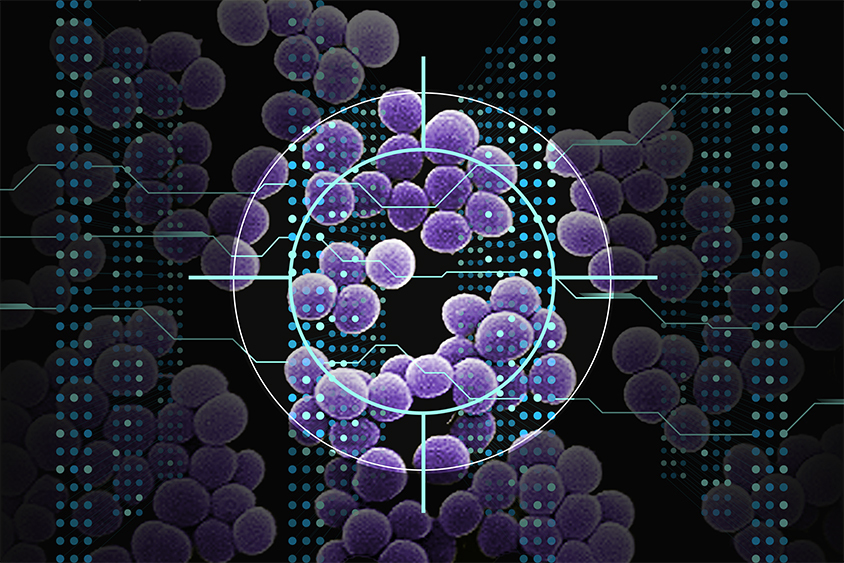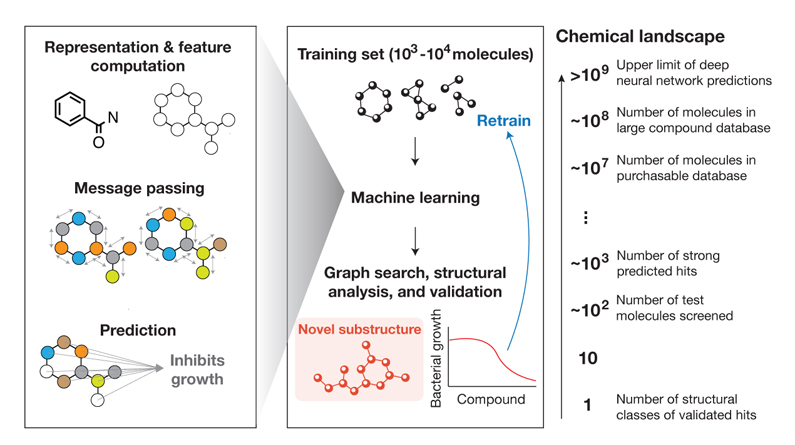
2nd January 2024 AI finds new antibiotic candidates The Massachusetts Institute of Technology (MIT) has used deep learning to identify a new class of antibiotic candidates, able to kill methicillin-resistant Staphylococcus aureus (MRSA).
The intersection of artificial intelligence and biology is one of the most promising frontiers in modern science, offering groundbreaking possibilities in healthcare and the acceleration of discoveries. In one of the latest examples, a team from MIT has identified a new class of compounds that could solve the problem of methicillin-resistant Staphylococcus aureus (MRSA). This bacterium causes half a million hospitalisations and 50,000 deaths each year in the United States alone. The researchers used deep learning to identify the kind of chemical structures most associated with antimicrobial activity. Their models then sifted through millions of other compounds, generating predictions of the ones with strong antimicrobial activity. After narrowing down potential candidates, they applied them to MRSA grown in a lab dish, alongside two mouse models of MRSA infection. Not only did the compounds kill the bacteria, they also had very low toxicity when tested on human cells, making them highly promising for further studies that could lead to effective drug treatments. The team's study is published in Nature.
Credit: Wong, et al. (Nature, 2023)
"The insight here was that we could see what was being learned by the models to make their predictions that certain molecules would make for good antibiotics. Our work provides a framework that is time-efficient, resource-efficient, and mechanistically insightful, from a chemical-structure standpoint, in ways that we haven't had to date," said James Collins, Professor of Medical Engineering and Science at MIT. This study is part of the ongoing Antibiotics-AI Project at MIT. The mission of this project, led by Professor Collins, is to discover new classes of antibiotics against seven types of deadly bacteria over seven years. Previous work by the team has yielded potential new drugs against Acinetobacter baumannii, another bacterium which is often found in hospitals. Their model could lead to drug candidates that are effective against a wide range of bacteria. "You can represent basically any molecule as a chemical structure, and also you tell the model if that chemical structure is antibacterial or not," said postdoc and co-author Felix Wong. "The model is trained on many examples like this. If you then give it any new molecule – a new arrangement of atoms and bonds – it can tell you a probability that that compound is predicted to be antibacterial." Lab experiments revealed that these latest new compounds appear to kill bacteria by disrupting their ability to maintain an electrochemical gradient across their cell membranes. This gradient is critical for many cell functions, such as production of ATP (molecules used by cells to store energy). An antibiotic candidate that Collins' lab discovered in early 2020, halicin, appears to work by a similar mechanism but is only specific to Gram-negative bacteria (which have thin cell walls). MRSA is a Gram-positive bacterium, with thicker cell walls. "We have pretty strong evidence that this new structural class is active against Gram-positive pathogens by selectively dissipating the proton motive force in bacteria," explained Wong. "The molecules are attacking bacterial cell membranes selectively, in a way that does not incur substantial damage in human cell membranes. Our substantially augmented deep learning approach allowed us to predict this new structural class of antibiotics, and enabled the finding that it is not toxic against human cells." The researchers have shared their findings with Phare Bio, a nonprofit started by Collins and others as part of the Antibiotics-AI Project. The nonprofit now plans to do more detailed analysis of the chemical properties and potential clinical use of these compounds. Meanwhile, Collins' lab is working on designing additional drug candidates based on the findings of this new study, as well as using the models to seek compounds that can kill other types of bacteria.
Comments »
If you enjoyed this article, please consider sharing it:
|








